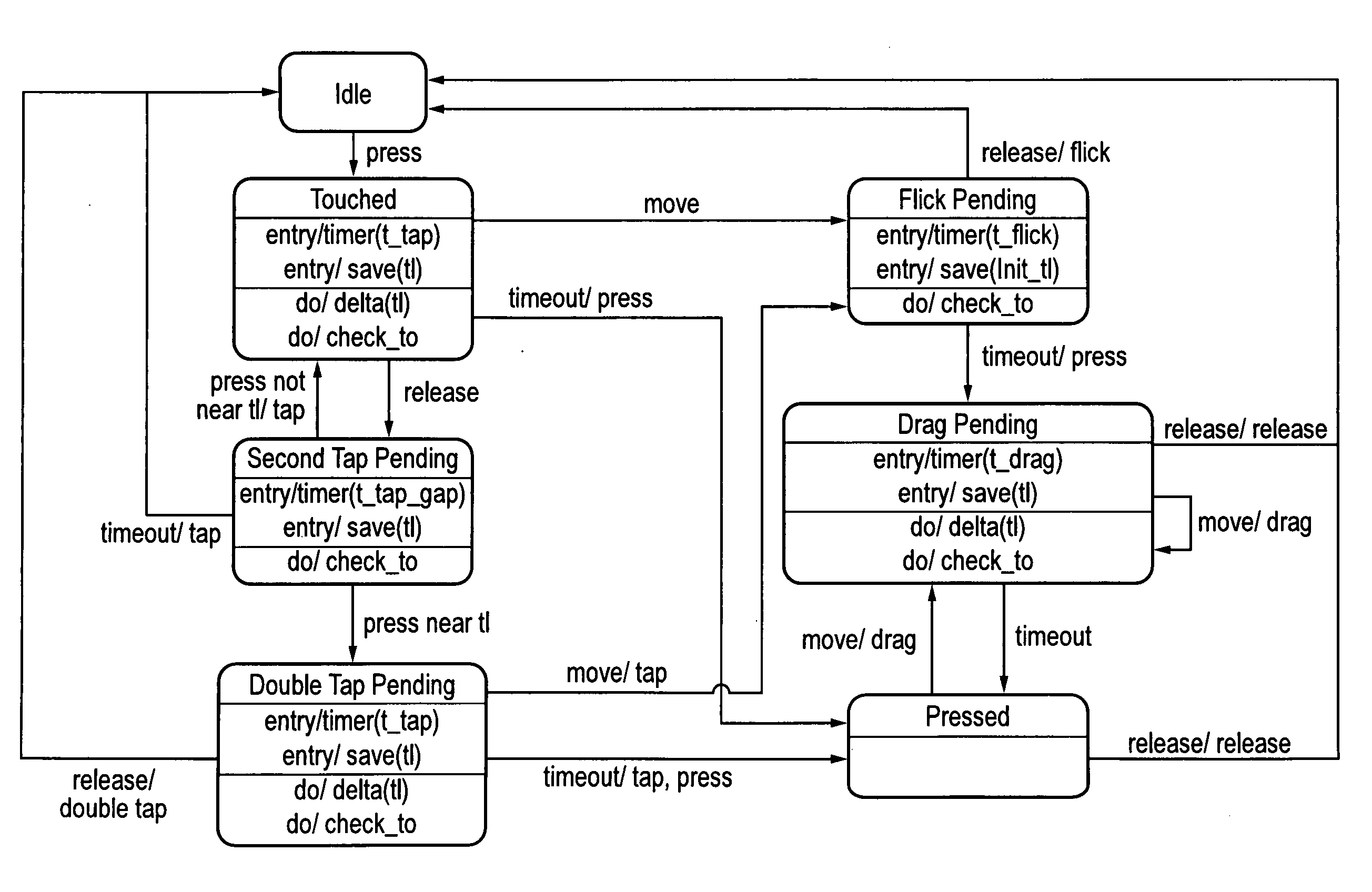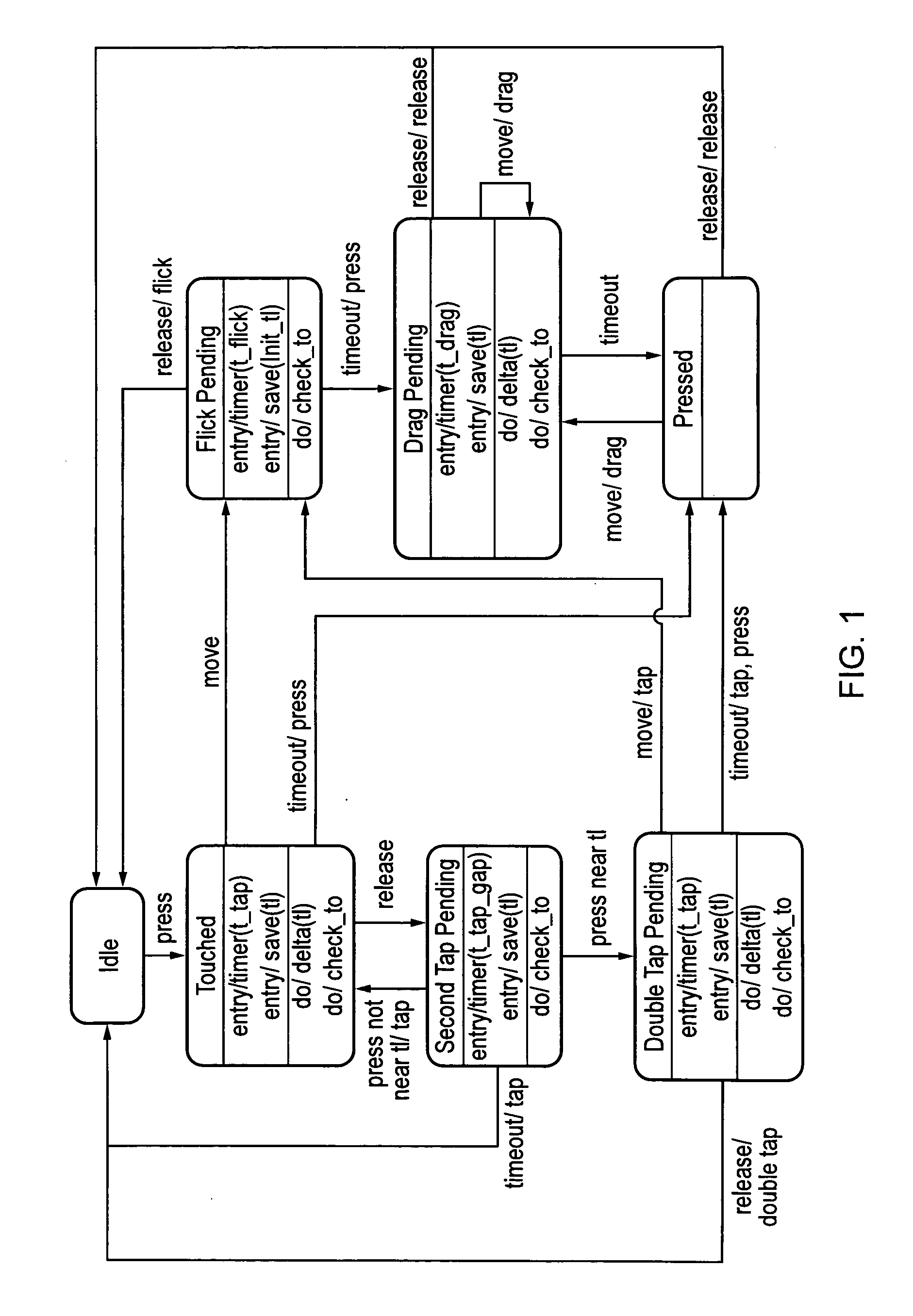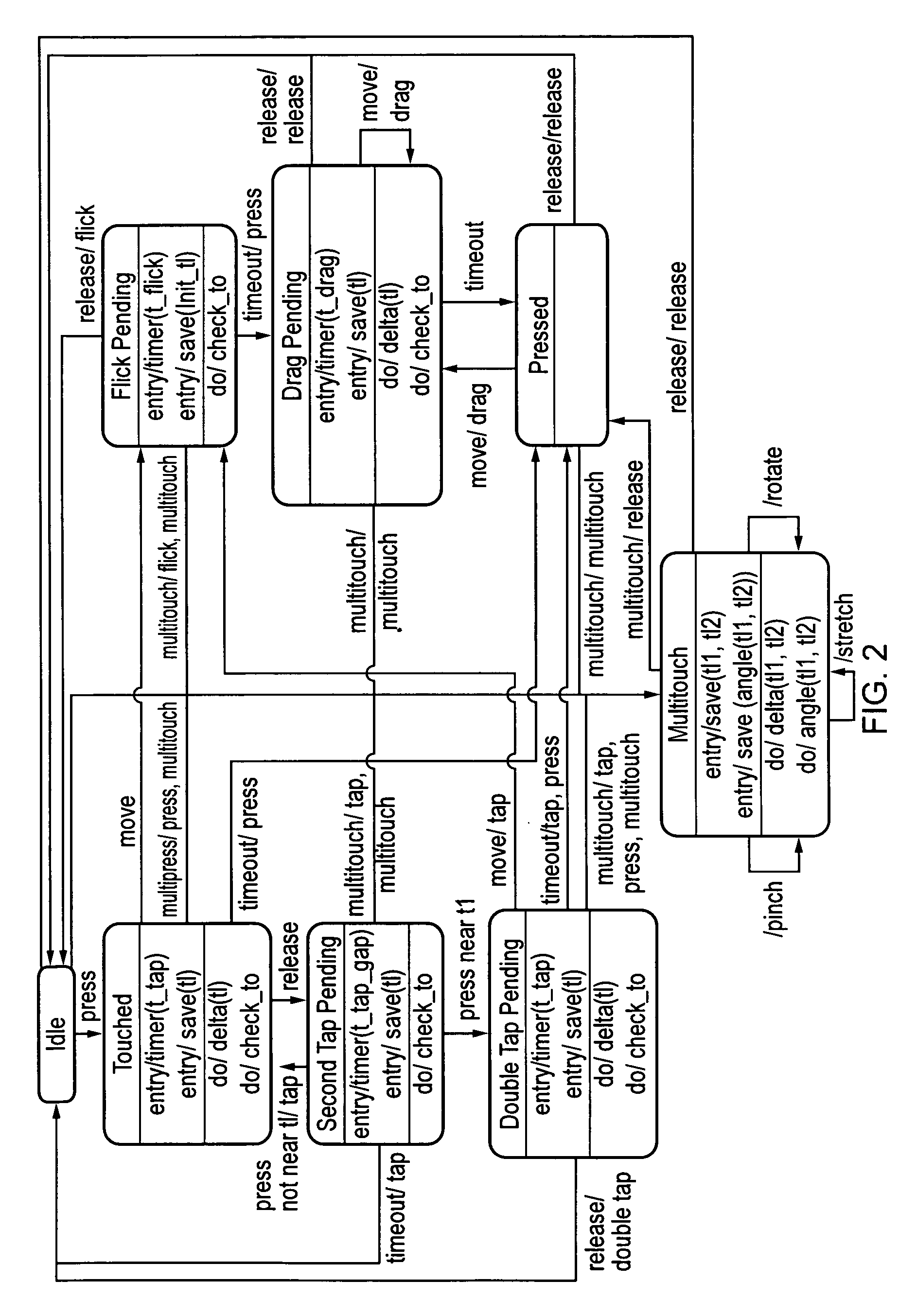Gesture Recognition
a technology of finger and finger, applied in the field of finger recognition, can solve the problems of reducing transparency, increasing construction costs, and difficulty in scaling up the screen siz
- Summary
- Abstract
- Description
- Claims
- Application Information
AI Technical Summary
Benefits of technology
Problems solved by technology
Method used
Image
Examples
first embodiment
[0078]FIG. 1 shows a state machine for gesture recognition which is limited to processing gestures made up of single touches. In other words, multitouch gestures are not catered for in this embodiment. The supported gestures are: tap; press; double tap; flick; and drag. These 5 gestures are recognized in the state machine by traversing 7 states interconnected by approximately 17 transitions, as illustrated in the figure. The states can be further subdivided into those relating to static touches, namely press, tap and double tap in this example, and those related to moving touches, namely flick and drag in this example.
[0079]The Idle state is now described. The Idle state occurs whenever a user is not touching the touch surface. There are no actions triggered by entering this state, and no actions performed while in this state. The Idle state will undergo a transition into a Touched state if the user presses the touch surface with one finger. The Idle state has no parameters, and th...
second embodiment
[0105]It would also be difficult to extend the state machine of the second embodiment to handle gestures involving more than two touches. The state machine complexity would grow rapidly with each additional touch.
[0106]These limitations are overcome by a fourth embodiment of the invention according to which the multitouch state is removed from the state machine of the second embodiment to return to a simple single-touch state machine according to the first embodiment as shown in FIG. 1. A single-touch state machine of this kind can track all of the required information from a single touch. Multiple single-touch state machines are then combined to handle multiple touch gestures instead of creating a more complex multi-touch state machine following the approach of the second embodiment.
fourth embodiment
[0107]FIG. 4 shows at its highest conceptual level a state machine according to the In this diagram, the ‘Touch x’ blocks each represent the single-touch state machine in FIG. 3. ‘N’ such state machines are processed by an N-touch state machine to generate N-touch gestures.
[0108]FIG. 5 shows internal structure of the N-touch state machine of the second embodiment, which comprises idle and touched states. If all touches are pressed, the state machine is in the N-Touch Touched state, otherwise it is in the N-Touch Idle state. The state machine can generate events in either state. For instance, when in the N-Touch Touched state, if all of the 1-touch state machines are in the drag pending state, an N-Touch Drag event could be generated when any of them generate a Drag event.
[0109]FIG. 6 shows how this approach can be used to give equivalent functionality to the state machine of the second embodiment shown in FIG. 2, but with a simpler scalable architecture.
[0110]In this example, Touch...
PUM
 Login to View More
Login to View More Abstract
Description
Claims
Application Information
 Login to View More
Login to View More - R&D
- Intellectual Property
- Life Sciences
- Materials
- Tech Scout
- Unparalleled Data Quality
- Higher Quality Content
- 60% Fewer Hallucinations
Browse by: Latest US Patents, China's latest patents, Technical Efficacy Thesaurus, Application Domain, Technology Topic, Popular Technical Reports.
© 2025 PatSnap. All rights reserved.Legal|Privacy policy|Modern Slavery Act Transparency Statement|Sitemap|About US| Contact US: help@patsnap.com



